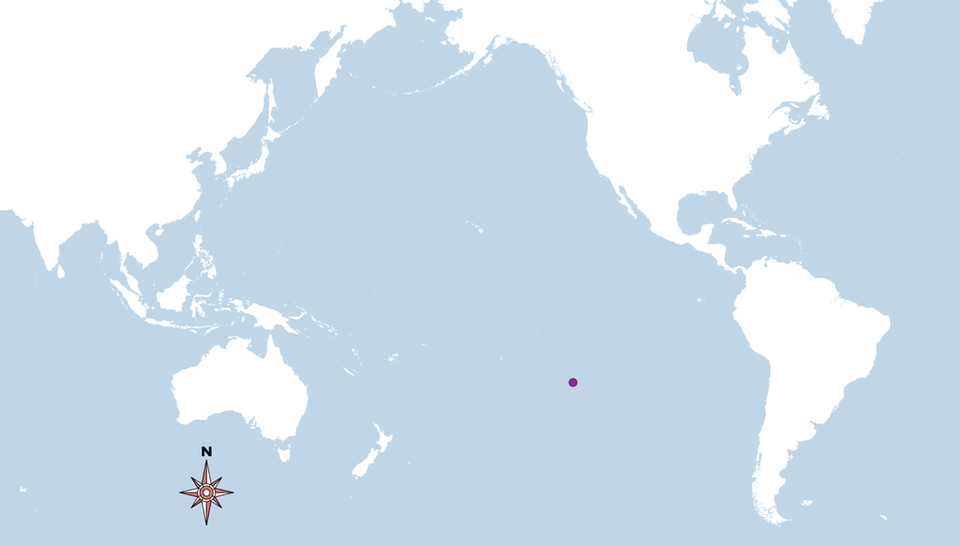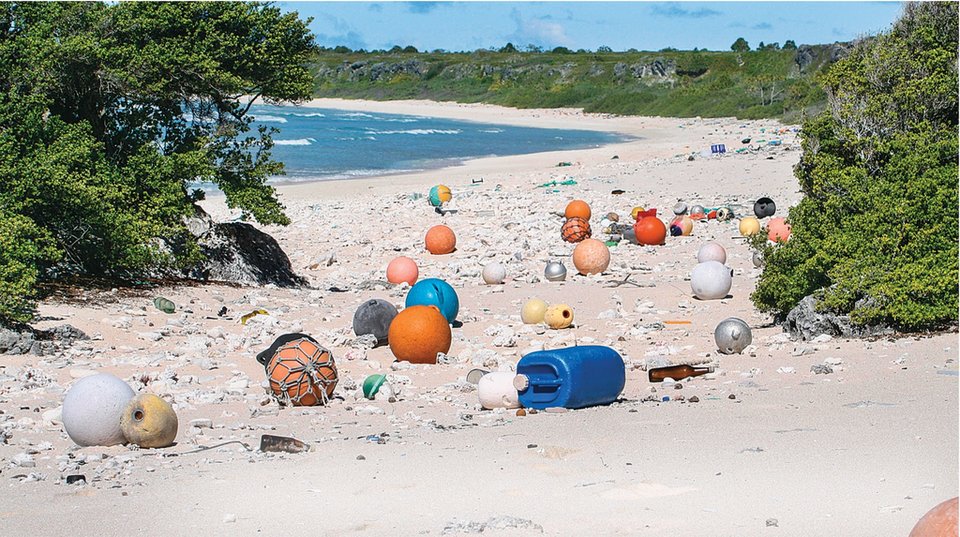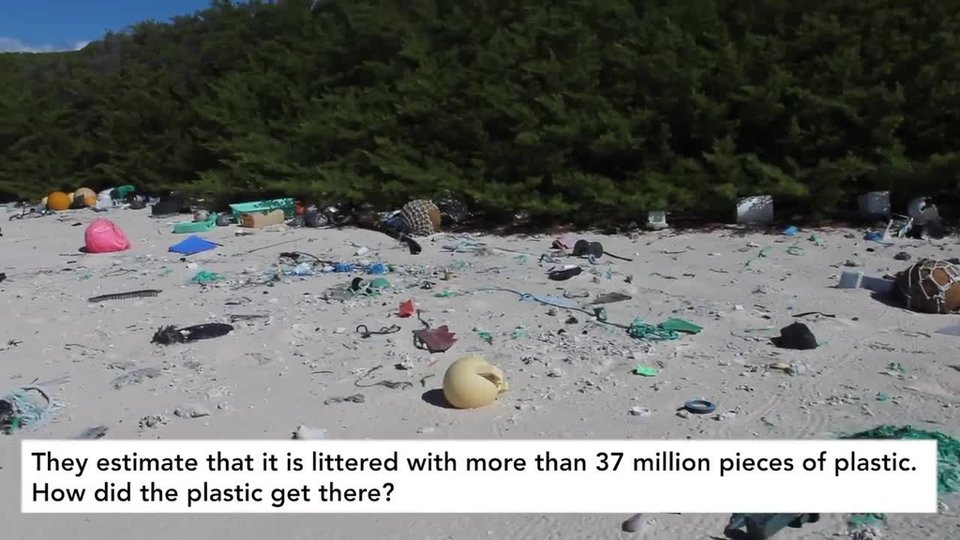PlasticPollution
ImagineifplastichadbeeninventedwhenthepilgrimssailedfromEnglandtoNorthAmerica.WhatiftheMayflowerhadbeenstockedwithplastic‑wrappedsnacks?Theplastictrashwouldprobablystillbehere,fourcenturies later.
Ifthepilgrimshadbeenlikemanypeopletoday,theymighthavetossedtheirwrappersoverthesideoftheship.AtlanticOceanwavesandsunlightwouldhavewornallthatplasticintotiny bits.
Plasticwasn’tinventeduntilthelate19thcentury.Massproductionofittookoffaround1950.Inonly70years,wehaveproducedawhopping9.2billiontonsofplastic.Ofthat,morethan6.9billiontonshavebecomewaste.And,ofthatwaste,6.3billiontonswerenever recycled.
Nooneknowshowmuchplasticendsupintheocean.In2015,JennaJambeck,aUniversityofGeorgiaengineeringprofessor,madean estimate.

Isthisaflorist'sshopinChinafilledwithflowers?Lookagain.Theseplantsareallmadefrom plastic.
Jambeckprojectedthatbetween5.3and14 milliontonsofplasticendupintheoceaneachyear.It’sdumpedonlandorinrivers.It’sthenblownorwashedintothesea.Howlongwillittakeforthatplasticto biodegrade, orbreakdown?Estimatesgofrom450yearstomaybe never.
Plasticisn’talways“bad”.Infact,ithastransformedourlives.Iteasedtravelintospace.Itchangedmedicine.Itextendedthelifeof food.
Plasticevensavedwildlife.Inthemid‑1800s,pianokeys,combs,andothertrinketsweremadeofelephantivory.Elephantswereatrisk.Ivorybecamescarce.So,acompanyinNewYorkCityofferedarewardifsomeonecouldcomeupwithan alternative.
InventorJohnWesleyHyattcreatedaplasticfromasubstancefoundinplants.Endlesspossibilitiesopenedup — becauseplasticwas cheap!
HendersonIsland’sShame
HendersonIslandisatiny,uninhabitedisland.ItsitsinthemiddleofthePacificOcean.Thenearestmajorpopulationcenterissome4,800kilometers(3,000 miles)away.Itishalfthesize ofManhattan.Yet,morethan19tonsoftrashlitteritsbeaches,mostofit plastic.
Researchersestimatethattheislandhasthegreatestamountofdebrisforitssizeofanyplaceintheworld.Foreverysquaremeteryouwalk,onaverageyou’llfind672piecesoftrash.Foreachpieceofdebrisyouseeonthebeach,twopiecesareburiedinthesand.Howisthis possible?
TrashbobsacrossglobalseasuntilitgetssweptintotheSouthPacificgyre.Thegyreisacircularoceancurrent.Itfunctionslikeaconveyorbelt.Thegyrecollectsplastictrash.ThenitsendsittoHenderson’sshoresatarateofmorethan3,500piecesa day.

HendersonIslandisoneoftheworld'smostfarawayplaces.Itisalsooneofitsmost polluted.

Henderson Island
anuninhabitedislandprizedforits animal diversity
Asia
Australia
North
America
South
America
Pacific
Ocean
HendersonIsland
- Morethan37 millionpiecesofplasticonthe island
- Morethan3,500pieceswashingup daily

